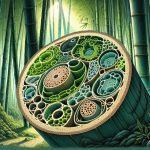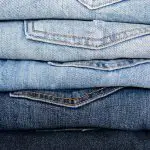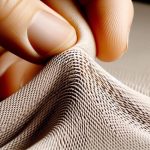When you think about bamboo rayon, or viscose, it’s easy to overlook the complex chemistry behind its production. Sodium hydroxide and carbon disulfide play essential roles in transforming bamboo into soft, strong fibers. However, the use of these chemicals isn’t without consequences. What does this mean for the environment and your health? Let’s explore the implications of these substances in the textile industry.
Table of Contents
Key Takeaways
- Sodium hydroxide is used to break down bamboo fibers and dissolve cellulose for rayon production.
- Carbon disulfide transforms cellulose into a soluble form necessary for spinning fibers.
- Sodium hydroxide also removes impurities like lignin and hemicellulose during processing.
- Both chemicals pose environmental risks, including air and water pollution, if not managed properly.
- Awareness of these chemicals is essential for consumers seeking sustainable bamboo rayon products.
Overview of Bamboo Rayon Production
Bamboo rayon production involves several key steps that transform natural bamboo into a soft, versatile fabric.
First, you’ll harvest mature bamboo stalks, which are then crushed and soaked in water to break down the fibers.
Next, you’ll extract the cellulose, which is the main component of bamboo. This cellulose is dissolved in a solution to create a thick, viscous liquid.
The main component of bamboo, cellulose, is extracted and dissolved to form a thick, viscous liquid.
After that, you’ll push this liquid through spinnerets, forming fine filaments that are solidified into strands.
The strands are then washed, bleached, and dried, resulting in the soft fabric you know as bamboo rayon.
Finally, you’ll cut the fabric into desired lengths, making it ready for various applications in the textile industry.
Key Chemicals in Bamboo Rayon Manufacturing
When you look at bamboo rayon production, two key chemicals stand out: sodium hydroxide and carbon disulfide.
Sodium hydroxide helps break down the bamboo fibers, while carbon disulfide plays a vital role in transforming them into rayon.
However, it’s important to take into account the environmental concerns associated with these chemicals as we explore their impact on the manufacturing process.
Sodium Hydroxide Functionality
Sodium hydroxide plays an essential role in the manufacturing of bamboo rayon, acting as a powerful solvent that breaks down the cellulose found in bamboo fibers.
When you introduce sodium hydroxide to the bamboo, it dissolves the cellulose, allowing you to transform the rigid plant structure into a more pliable form. This process is vital because it prepares the cellulose for further processing.
Additionally, sodium hydroxide helps in removing impurities, such as lignin and hemicellulose, which can hinder the quality of the final product.
Carbon Disulfide Role
After sodium hydroxide has effectively prepared the cellulose, carbon disulfide steps in to further the transformation process. This chemical plays an essential role in converting cellulose into a soluble form, allowing it to be spun into fibers.
Here’s how carbon disulfide contributes to bamboo rayon production:
- Dissolution: It helps dissolve the cellulose, creating a viscous solution that can be processed into fibers.
- Regeneration: The cellulose solution is later regenerated into solid fibers through a series of chemical reactions.
- Fiber Formation: Carbon disulfide aids in the formation of smooth, strong rayon fibers vital for textile applications.
Understanding carbon disulfide’s function is key to grasping how bamboo transforms into the soft, luxurious fabric you enjoy.
Environmental Concerns Explained
While bamboo is often praised for its sustainability, the chemicals used in its rayon production raise significant environmental concerns.
You mightn’t realize that carbon disulfide, a key chemical, can cause air and water pollution. This toxic solvent not only poses health risks to workers but also contaminates surrounding ecosystems.
Additionally, sodium hydroxide, used to dissolve bamboo fibers, can lead to harmful byproducts if not managed properly. The process often consumes large amounts of water and energy, further straining natural resources.
Even though bamboo itself is renewable, the manufacturing methods can offset its environmental benefits. As a conscious consumer, it’s crucial to evaluate these factors when choosing bamboo rayon products.
Environmental Impact of Chemical Use
When you consider the chemicals used in bamboo rayon production, their toxicity raises significant concerns.
You might worry about how these substances contribute to pollution and impact local ecosystems.
Understanding regulatory oversight efforts can help you grasp how the industry is addressing these environmental challenges.
Toxicity of Chemicals
Although bamboo is often praised for its sustainability, the chemicals used in its transformation into rayon can pose significant environmental risks. You need to be aware of the toxicity of these chemicals, which can affect both ecosystems and human health.
Here are three key points to take into account:
- Sodium Hydroxide: This caustic substance can cause severe harm to aquatic life if released untreated into waterways.
- Carbon Disulfide: Exposure to this chemical is linked to serious health issues, including neurological damage and reproductive problems.
- Acetic Acid: While less harmful than others, it can still lead to environmental degradation if not managed properly.
Understanding these risks is essential in advocating for safer production methods in bamboo rayon manufacturing.
Pollution Concerns
The chemicals used in bamboo rayon production not only pose health risks but also contribute considerably to pollution. When these toxic substances are released into the environment, they can contaminate soil, water, and air.
You mightn’t realize it, but manufacturing processes often lead to the discharge of harmful chemicals, such as carbon disulfide and sodium hydroxide. These pollutants can have devastating effects on local ecosystems, harming aquatic life and disrupting plant growth.
If you care about sustainability, it’s essential to reflect on the environmental footprint of bamboo rayon. By choosing alternatives or supporting environmentally-friendly practices, you can help reduce pollution and promote cleaner production methods.
Every choice you make can contribute to a healthier planet.
Regulatory Oversight Efforts
As concerns about the environmental impact of chemicals used in bamboo rayon production grow, regulatory oversight efforts are becoming increasingly essential.
You should be aware of key initiatives aimed at mitigating these impacts:
- Chemical Management Programs: These programs aim to regulate the use of hazardous chemicals in production, promoting safer alternatives.
- Environmental Impact Assessments: Companies are often required to conduct assessments before commencing production, guaranteeing they understand potential ecological consequences.
- Sustainability Certifications: Certifications like the Global Organic Textile Standard (GOTS) encourage environmentally friendly practices and guarantee transparency in chemical usage.
Together, these efforts help hold manufacturers accountable, guaranteeing they prioritize sustainable practices.
Staying informed about these regulations can empower you to make better choices when purchasing bamboo rayon products.
Health Risks Associated With Chemical Exposure
When working with bamboo rayon, you might unknowingly expose yourself to several hazardous chemicals, raising concerns about long-term health effects.
These chemicals, such as carbon disulfide and sodium hydroxide, can lead to various health issues. Short-term exposure may cause headaches, dizziness, or skin irritation, but the long-term risks are more alarming.
You could face neurological damage, respiratory problems, or even reproductive issues if you’re frequently exposed. It’s crucial to be aware of your working environment and take necessary precautions, like wearing protective gear and ensuring proper ventilation.
Regulatory Actions and Compliance
Awareness of health risks linked to chemical exposure in bamboo rayon production has prompted regulatory bodies to take action.
Health risks from chemical exposure in bamboo rayon production have led to increased regulatory actions for consumer safety.
As a consumer, it’s important to understand the measures being implemented to guarantee safety and compliance. Here are three key actions taken by regulators:
- Establishing Safety Standards: Agencies have set limits on the use of hazardous chemicals like carbon disulfide in production processes.
- Conducting Inspections: Regular inspections of manufacturing facilities help guarantee compliance with environmental and health regulations.
- Mandatory Reporting: Manufacturers must disclose chemical usage and potential health risks, promoting transparency in the industry.
These initiatives aim to protect workers and consumers alike, helping you make informed choices when purchasing bamboo rayon products.
Mislabeling Issues in the Textile Industry
Mislabeling in the textile industry can lead you to make choices based on inaccurate information about the materials used in products.
When you see labels like “bamboo” or “eco-friendly,” it’s easy to assume the fabric is sustainable. However, many items labeled as bamboo rayon are actually viscose, produced using harmful chemicals like sodium hydroxide and carbon disulfide.
This misleading labeling can also apply to other fibers, like cotton or polyester, where blends may not be clearly identified. As a consumer, you might unwittingly support practices that harm the environment.
To make informed decisions, it’s essential to research brands, read ingredient lists carefully, and seek certifications that guarantee transparency in the sourcing and production of textiles.
Future Directions for Sustainable Production
As the demand for sustainable textiles grows, innovative approaches to production are emerging that prioritize both environmental health and consumer transparency.
Here are three promising directions for the future of sustainable bamboo rayon production:
- Closed-Loop Systems: Implementing closed-loop processes can minimize waste and recycle chemicals used in production, reducing environmental impact.
- Eco-Friendly Chemicals: Shifting to non-toxic, biodegradable solvents can enhance safety throughout the manufacturing process, benefiting both workers and ecosystems.
- Certifications and Standards: Developing rigorous sustainability certifications can help consumers make informed choices, ensuring that brands are held accountable for their practices.
Frequently Asked Questions
Is Bamboo Rayon Biodegradable or Compostable?
Bamboo rayon is biodegradable, breaking down over time in the right conditions. However, its compostability depends on the chemicals used in processing. Always check the label to verify you’re making an eco-friendly choice!
How Does Bamboo Rayon Compare to Cotton in Terms of Sustainability?
You might be surprised to learn that bamboo rayon often uses fewer chemicals than cotton, making it more sustainable. However, both have environmental impacts, so choosing organic options can enhance your sustainability efforts.
Can Bamboo Rayon Be Recycled?
Yes, you can recycle bamboo rayon, but the process isn’t straightforward. Many recycling facilities don’t accept it because it’s blended with other materials. Always check local guidelines to see if they accept bamboo rayon for recycling.
What Are the Benefits of Using Bamboo Rayon Fabrics?
Bamboo rayon fabrics offer you softness, breathability, and moisture-wicking properties. They’re biodegradable and environmentally friendly, making them a sustainable choice. Plus, their natural antibacterial qualities keep you fresh and comfortable all day long.
Are There Any Certifications for Sustainable Bamboo Rayon Products?
Yes, you can find certifications for sustainable bamboo rayon products, like OEKO-TEX and FSC. These labels guarantee responsible sourcing and environmentally friendly production practices, helping you make informed choices while shopping for sustainable fabrics.
- Tetron Silk Fabric: A Comprehensive Guide - June 17, 2025
- Tetron Rayon Fabric: Features and Applications - June 17, 2025
- Tetron Cotton Fabric: Uses and Benefits - June 17, 2025







